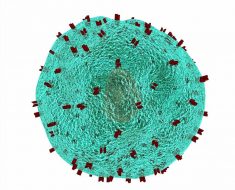While obese adults often report more pain after surgery, the same does not appear to be true for obese children, according to the largest study of its kind, being presented at the ANESTHESIOLOGY 2018 annual meeting.
“There is some evidence that suggests adults who are obese might be extra sensitive to pain and therefore need more pain medication after surgery,” said M. Alparslan Turan, M.D., an author of the study and physician anesthesiologist at the Cleveland Clinic. “We didn’t find that to be true of children, which suggests that those who fall into the obese category may not require higher doses of opioids as obese adults often do.”
The findings suggest the current protocol for managing pain in children after surgery—in which dosing is based on the patient’s actual body weight, and not BMI or whether the child is considered obese—should continue. The protocol for managing pain in obese adults varies from institution to institution but typically is not based on weight, he notes.
Researchers analyzed pain scores of 808 children (aged 8 to 18) who underwent non-cardiac surgery at the Cleveland Clinic between 2010 and 2015. Pain was assessed on a scale ranging from 0 (no pain) to 10 (worst pain imaginable). They compared the pain scores of children of various weights based on body mass index (BMI): 59 were underweight, 513 were healthy weight, 106 were overweight and 130 were obese. They determined that in the first 48 hours after surgery there was no correlation between BMI and pain for urologic, orthopedic and general surgeries.
There was a slight increase in pain of 0.06 points for every fifth percentile increase in BMI in the neurological group, but the difference was very small, said Raza.
Researchers also found that opioid use actually decreased an estimated 0.3 percent for every fifth percentile increase in BMI, but the difference was miniscule and shouldn’t change protocol, he said. Researchers said they were pleased that increased BMI did not result in increased need for the powerful narcotics.
Source: Read Full Article





